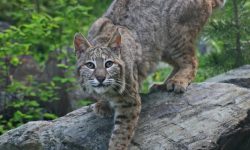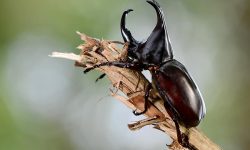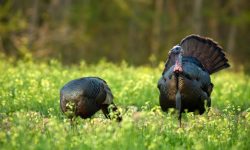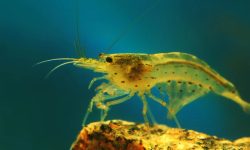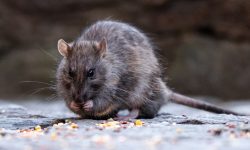Caterpillars are among the most voracious eaters in the insect world. As the larval stage of butterflies and moths, they must consume large amounts of food in a short time to fuel their rapid growth. Their diet shapes not only their survival but also the development of their adult forms, including wing coloration, strength and overall health. Because of this, caterpillars depend on specific plant species that meet their nutritional needs and provide the right chemical balance for growth.
In the wild, caterpillars can be picky or generalist eaters depending on their species. Some feed exclusively on one type of plant, while others consume a variety of leaves, flowers or even soft fruit. Their ability to blend into foliage helps them avoid predators, allowing them to feed continuously throughout their early life stages. Understanding what caterpillars eat helps gardeners, nature observers and butterfly enthusiasts support healthy ecosystems and encourage the presence of butterflies.
This detailed guide explores 20 foods caterpillars love most, highlighting the plants they rely on, how they feed and why these foods are essential for their survival.
Understanding the Caterpillar Diet
Caterpillars have extremely high nutritional demands because they undergo one of the fastest growth processes in the natural world. A caterpillar may grow from a tiny hatchling to several inches long within weeks, shedding its skin multiple times as it expands. To sustain this transformation, caterpillars depend on leaves rich in nitrogen, moisture and plant chemicals essential for development. Their mouthparts are specialized for chewing, allowing them to grind down fibrous plant tissue efficiently.
Most caterpillars are herbivores, but they are not random feeders. Many species are host-plant specialists, meaning they rely on specific plants for survival. Monarch caterpillars, for example, eat only milkweed because it contains toxins that protect them from predators. Other species take a more general approach and feed on many types of leaves, giving them greater adaptability in diverse habitats. The choice of food influences their growth rate, coloration and even their chances of reaching adulthood.
Caterpillars also use their diet as a defense mechanism. Some plants provide toxins that caterpillars store in their bodies, making them distasteful to predators. Others rely on camouflage provided by the plants they feed on. By understanding what caterpillars eat, we can better protect their food sources in gardens, forests and meadows, supporting butterfly and moth populations essential for pollination and ecosystem health.
20 Foods Caterpillars Love Most
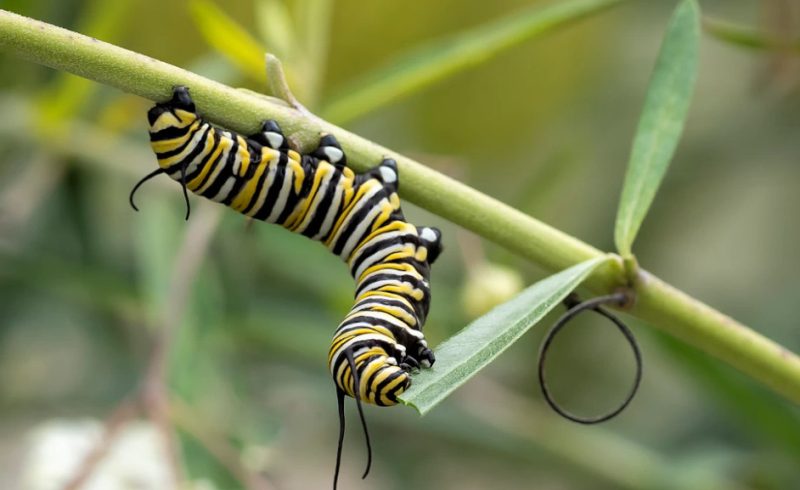
1. Milkweed Leaves
Milkweed is the sole food source for monarch caterpillars, making it one of the most iconic caterpillar plants. These leaves contain toxic cardenolides, which monarch larvae consume and store in their tissues, protecting them from predators. The plant’s milky sap also offers moisture essential for growth.
Young caterpillars often start by scraping the leaf surface before chewing through the edges as they grow bigger. Milkweed leaves provide the perfect chemical balance that helps larvae develop properly and prepare for metamorphosis. Without milkweed, monarch butterflies cannot complete their life cycle.
In natural environments, milkweed grows in meadows, roadsides and prairies, ensuring caterpillars have access to abundant food. Planting milkweed is one of the best ways people can support monarch conservation.
2. Oak Leaves
Oak trees host numerous caterpillar species, including tussock moths and hairstreak butterflies. The leaves offer a rich blend of nutrients, making them excellent for supporting fast caterpillar growth. Oaks grow widely across forests and suburban neighborhoods, providing caterpillars with reliable food sources.
Caterpillars chew through tender oak leaves during spring and summer, often leaving irregular holes or scalloped edges. As they mature, they may consume entire leaf sections, contributing to natural leaf turnover in forests. Caterpillars feeding on oaks may also serve as an important food source for birds.
Oaks support biodiversity by hosting hundreds of leaf-eating insects. Caterpillars thriving on oak leaves become vital players in forest food webs, fueling the diets of birds, spiders and small mammals.
3. Willow Leaves
Willow leaves attract many butterfly and moth species, including viceroys and mourning cloaks. The soft texture and moisture-rich structure of willow leaves make them easy for young caterpillars to chew. Willows often grow near wetlands, providing caterpillars with humid conditions ideal for survival.
Caterpillars feeding on willow leaves typically rest on the undersides where they are less visible to predators. The high nutrient content supports rapid growth, allowing them to molt multiple times while staying protected in leafy canopies. Willows also offer long branches and abundant foliage for shelter.
Because willows grow quickly, they can withstand heavy caterpillar feeding without long-term damage. This resilience makes them valuable food sources for caterpillars in natural and restored habitats.
4. Cherry Leaves
Cherry trees support various butterfly and moth species, including the eastern tiger swallowtail. Caterpillars consume cherry leaves during spring and early summer when the foliage is soft and nutrient-rich. These leaves contain compounds that help support digestion and caterpillar development.
Young larvae typically chew small holes in leaves, while older ones feed along edges or consume entire sections. Cherry leaves offer the right balance of moisture and toughness, helping caterpillars strengthen their mandibles as they grow. Cherry trees also provide excellent camouflage due to their dense foliage.
In gardens and forests, cherry trees play a major role in sustaining early-season caterpillars. Their leaves help young caterpillars reach maturity, making cherry species essential to regional butterfly populations.
5. Maple Leaves
Maple trees provide a reliable food source for numerous caterpillar species. Their broad leaves allow multiple larvae to feed simultaneously on a single branch. Maples grow across temperate regions, giving caterpillars widespread access to nutrient-dense foliage.
Caterpillars feeding on maple leaves often rest on leaf veins or undersides, blending in with the natural coloration. The soft texture makes maple leaves ideal for young caterpillars that are still developing strong mandibles. As they mature, caterpillars consume larger sections of leaves.
Maple trees help sustain ecological food chains by hosting caterpillars that eventually feed birds, bats and predatory insects. The abundance of maple leaves supports healthy growth and successful metamorphosis.
6. Cabbage Leaves
Cabbage is a well-known host plant for species like cabbage white butterflies. Caterpillars quickly consume cabbage leaves, leaving characteristic holes and patterns that make them easy to identify. These leaves are rich in nutrients and moisture, promoting rapid caterpillar growth.
Even though cabbage leaves contain natural defenses like glucosinolates, caterpillars have evolved enzymes that allow them to digest these chemicals safely. This adaptation protects them from predators that avoid cabbage-fed caterpillars due to their strong scent.
Cabbage beds in gardens often support multiple generations of caterpillars throughout warm seasons. Their rapid feeding helps them prepare for the pupal stage quickly.
7. Clover Leaves
Clover leaves serve as food for various butterfly species, including sulfur butterflies. These leaves contain high levels of protein and moisture, which are crucial for caterpillar development. Clover grows abundantly in fields, lawns and meadows, giving larvae easy access to food.
Caterpillars typically chew along the edges of clover leaves, creating rounded bite marks. The small leaf size allows them to consume entire leaves in a short amount of time, fueling their quick growth cycles. Clover patches also create a safe environment with low vegetation for hiding.
In ecosystems, clover-fed caterpillars help transfer nutrients to predators higher up the food chain. This makes clover essential for sustaining local butterfly populations.
8. Dandelion Leaves
Dandelions provide tender leaves that many caterpillars find irresistible. The leaves are rich in moisture and contain essential minerals that support larval growth. Dandelions grow almost everywhere, making them a dependable food source for caterpillars.
Young caterpillars scrape the leaf surface, while older ones create larger holes or consume leaf edges. Their feeding supports rapid weight gain and healthy development before pupation. The natural bitterness of dandelion leaves may also help deter some predators.
Because dandelions grow in disturbed soils, grasslands and lawns, they provide an accessible and abundant food source throughout the growing season.
9. Nettles
Nettles are the primary host plant for many butterfly species, including red admirals and peacock butterflies. Despite their stinging hairs, caterpillars safely feed on nettle leaves thanks to their thick skin and specialized behavior patterns.
Nettle leaves contain high protein content and beneficial minerals, making them ideal for rapid larval growth. Caterpillars usually feed underneath leaves, avoiding predators while consuming large quantities of foliage.
In natural habitats, nettles support large populations of caterpillars that later mature into important pollinating butterflies. Their presence boosts biodiversity wherever they grow.
10. Birch Leaves
Birch leaves are soft, thin and rich in nutrients, making them excellent food sources for numerous caterpillar species, including the luna moth. Birch trees grow in forests and cooler climates, offering plentiful leaves for larvae.
Caterpillars feed on birch leaves by chewing along the edges or consuming entire sections. Their light coloration often matches the birch canopy, giving them natural camouflage against predators. Birch leaves support strong developmental stages before caterpillars pupate.
Birch forests rely heavily on caterpillars as part of the ecosystem, as they contribute to nutrient cycling and serve as food for birds.
11. Sunflower Leaves
Sunflowers host many caterpillar species due to their large, nutrient-rich leaves. These leaves offer abundant moisture and essential plant compounds that fuel rapid larval growth. Sunflowers thrive in warm climates, giving caterpillars long feeding periods.
Caterpillars chew irregular patterns into sunflower leaves, sometimes stripping entire sections. The broad leaf structure allows multiple larvae to feed without competing heavily for space. As they grow, they strengthen their jaws and digestive systems.
Sunflower fields support high biodiversity, offering food for caterpillars that eventually develop into pollinating adults benefiting the same plants they once fed on.
12. Apple Tree Leaves
Apple tree leaves attract many caterpillars, including tent caterpillars and swallowtails. Their tender leaves allow small larvae to begin feeding immediately after hatching. Apple foliage is nutrient-dense and supports rapid molting cycles.
Caterpillars feeding on apple leaves may create visible damage along the edges, forming scalloped patterns. As they grow larger, they consume bigger portions, helping prepare for the next developmental stage. Apple orchards provide extensive feeding grounds for caterpillars.
In natural ecosystems, apple trees help sustain early-season caterpillars that later become essential pollinators once they reach adulthood.
13. Parsley
Parsley is a primary host plant for black swallowtail caterpillars. These caterpillars eat leaves rapidly, often leaving only the stems remaining. Parsley provides rich nutrients and aromatic compounds that support healthy growth.
Young larvae begin by scraping small sections of leaves, while older larvae chew through entire leaflets. Parsley’s bright green color offers excellent camouflage for caterpillars resting on plants during feeding breaks.
Gardeners often plant parsley specifically to attract swallowtail butterflies, knowing that hungry caterpillars will benefit from this nutrient-packed herb.
14. Carrot Tops
Carrot greens are another favorite for black swallowtail caterpillars. The feathery leaves provide ample surface area for feeding and contain essential minerals. Caterpillars chew through tender sections of carrot tops during rapid growth stages.
Carrot tops also offer chemical compounds that help caterpillars develop bright coloration patterns. These patterns later play a role in deterring predators and increasing survival rates. The leaves remain soft through most of the growing season.
As host plants, carrots help sustain swallowtail populations, contributing to healthy butterfly ecosystems in gardens and farms.
15. Fennel
Fennel leaves host numerous caterpillar species, especially swallowtails. The delicate, feathery leaves are easy for young caterpillars to chew and digest. Fennel’s licorice-like scent also deters predators, offering caterpillars natural protection.
Caterpillars feeding on fennel leaves grow quickly, gaining the nutrients needed for successful metamorphosis. Older larvae consume larger sections and may defoliate fennel plants during peak feeding periods.
Fennel is a popular garden plant among butterfly enthusiasts because it attracts and sustains large numbers of swallowtail caterpillars.
16. Dill
Dill is another essential host plant for black swallowtail caterpillars. The leaves offer a soft and flavorful food source rich in moisture and nutrients. Dill grows rapidly, allowing caterpillars to feed without exhausting the plant too quickly.
Young larvae nibble delicately on dill fronds, while larger caterpillars consume entire stems. The strong aroma of dill protects larvae by masking their scent from predators. Caterpillars feeding on dill often display vibrant coloration.
Gardeners frequently grow dill to support swallowtail populations, making it a valuable addition to butterfly-friendly landscapes.
17. Plantain Leaves
Plantain leaves support various moth and butterfly caterpillars. The broad, soft leaves offer moisture-rich nutrients that are easy for young larvae to chew. Plantain grows widely in disturbed soils, making it a common and accessible food source.
Caterpillars feed on plantain by chewing holes or scalloped edges, depending on species. The leaves’ natural toughness helps older caterpillars strengthen their mandibles while feeding. Plantain patches provide reliable food throughout warm months.
In many ecosystems, plantain is essential for sustaining caterpillars that serve as a food source for birds and other predators.
18. Grape Leaves
Grape leaves attract species such as sphinx moths and anglewing butterflies. These large leaves provide extensive feeding surfaces and high nutritional value. Caterpillars often feed along the edges, leaving distinct bite patterns.
Young larvae prefer tender new leaves, while larger caterpillars consume tougher mature leaves. Grape vines create dense foliage that helps conceal caterpillars from predators while they feed.
Grape-growing regions often support large caterpillar populations essential for maintaining adult moth diversity.
19. Rose Leaves
Rose bushes host several caterpillar species, including sawfly larvae and sphinx moth caterpillars. Their tender leaves are easy for larvae to chew and digest, offering moisture and nutrients throughout spring and summer.
Caterpillars create patterned damage on rose leaves, ranging from small holes to large missing sections. The plant’s sharp thorns offer some protection, allowing caterpillars to hide while feeding. As they grow, rose leaves help support molting cycles.
In natural landscapes, roses help sustain pollinator species by supporting caterpillars that eventually mature into adult butterflies and moths.
20. Basil Leaves
Basil leaves are consumed by several caterpillar species, including some swallowtails and armyworms. The soft, aromatic leaves are nutrient-dense and easy for young larvae to digest. Basil grows quickly, providing ongoing feeding material.
Caterpillars create holes and edge damage on basil leaves while consuming large amounts during peak feeding periods. The plant’s strong scent helps mask larvae from predators, offering natural protection.
Gardeners often plant basil intentionally to attract caterpillars for butterfly conservation. Despite visible leaf damage, the plant often rebounds quickly and continues offering food through the growing season.
FAQs
What do caterpillars mostly eat?
Most caterpillars eat leaves, especially those from trees, herbs and garden plants.
Do caterpillars eat fruit?
Some species may eat soft or decaying fruit, but leaves remain their primary food source.
Are caterpillars picky eaters?
Many are host-plant specialists and only eat certain plants, while others are generalists.
Do caterpillars drink water?
They obtain moisture from the leaves they consume.
Can caterpillars eat grass?
Most cannot, but a few species specialize in grasses.
Do caterpillars eat flowers?
Yes, some species eat flower petals, buds or pollen.
Do caterpillars eat each other?
Only in rare cases when food is extremely scarce.
How much do caterpillars eat?
They can eat several times their body weight daily during growth.
What happens if a caterpillar eats the wrong plant?
It may experience digestive distress or die from plant toxins.
Do caterpillars eat during the chrysalis stage?
No. They stop feeding once they begin pupation.
Final Thoughts
Caterpillars rely on a wide variety of plants to fuel their rapid growth, and the foods they eat determine their strength, coloration and survival. By understanding what caterpillars eat, we gain insight into their life cycles and the vital role they play in natural ecosystems. From tender milkweed leaves to nutrient-rich herbs, these foods support their transformation into butterflies and moths—key pollinators essential for environmental balance. Supporting caterpillar-friendly plants is an easy and impactful way to promote biodiversity and help future generations of butterflies thrive.

